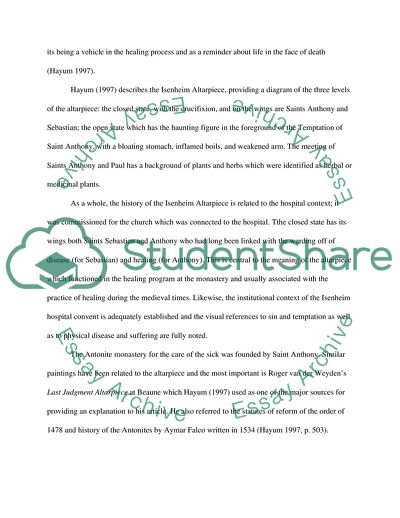Cite this document
(To What Extent Does the Original Context of the Isenheim Altarpiece Article, n.d.)
To What Extent Does the Original Context of the Isenheim Altarpiece Article. https://studentshare.org/performing-arts/1807877-to-what-extent-does-the-original-context-of-the-isenheim-altarpiece-explain-its-imagery
To What Extent Does the Original Context of the Isenheim Altarpiece Article. https://studentshare.org/performing-arts/1807877-to-what-extent-does-the-original-context-of-the-isenheim-altarpiece-explain-its-imagery
(To What Extent Does the Original Context of the Isenheim Altarpiece Article)
To What Extent Does the Original Context of the Isenheim Altarpiece Article. https://studentshare.org/performing-arts/1807877-to-what-extent-does-the-original-context-of-the-isenheim-altarpiece-explain-its-imagery.
To What Extent Does the Original Context of the Isenheim Altarpiece Article. https://studentshare.org/performing-arts/1807877-to-what-extent-does-the-original-context-of-the-isenheim-altarpiece-explain-its-imagery.
“To What Extent Does the Original Context of the Isenheim Altarpiece Article”. https://studentshare.org/performing-arts/1807877-to-what-extent-does-the-original-context-of-the-isenheim-altarpiece-explain-its-imagery.


